当前位置:网站首页>Sword finger offer high quality code
Sword finger offer high quality code
2022-07-07 07:01:00 【Nefelibat】
Catalog
subject : Integer power of value
Comprehensive and efficient code
subject : Print from 1 To the biggest n digit
Turn the problem into a problem of numerical arrangement , Recursion makes code simpler
subject : Delete the node of the linked list
subject : Delete duplicate nodes in the list
Code ( Follow up needs to see )
subject : Regular Expression Matching
subject : String representing the value
subject : Adjust the array order so that the odd Numbers precede the even Numbers
Extended topics : Put negative numbers in an array in front of non negative numbers
subject : The penultimate in a linked list K Nodes
subject : The entry node of the ring in the linked list
subject : Reverse a linked list
subject : Merge two ordered linked lists
Interviewers often consider
Check the quality of the code from the correctness and robustness of the program , For example, the detection of output parameters , How to handle errors and exceptions , Naming method .
The normalization of code

Be careful : When the candidate is writing code , It is best to name variables and functions with complete English word combinations .
Code integrity
Check whether the code completes the basic functions , Whether the input boundary value can get the correct output 、 Various use cases are handled .
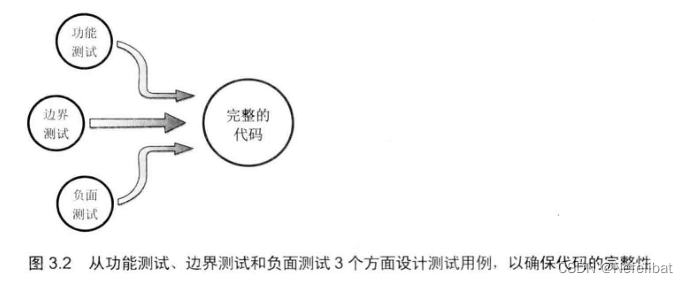
subject : Integer power of value
With handwritten code C In language pow() function .
Ideas
It is necessary to consider that the index is less than 1 The situation of . When the exponent is negative , First take the absolute value of the index , Calculate the result and then take the reciprocal . But when the base number is 0 When you count down, you will report an error , Special treatment required , Again 0 Of 0 Power is mathematically meaningless , So take 0 And take 1 Are acceptable .
Code
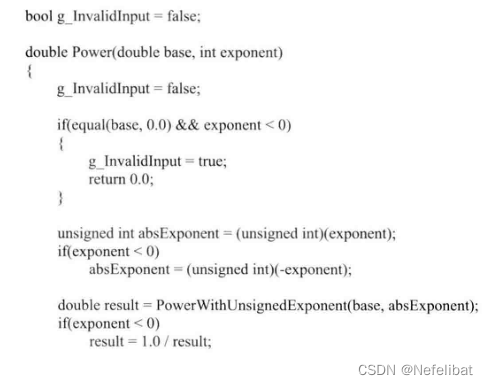
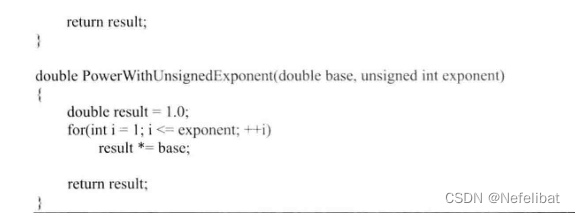
Comprehensive and efficient code
If the index is larger , Need to do 31 Times multiplication , Find a number 32 Power , If you already know its 16 Power , So as long as it's in 16 Square it again on the basis of power , It's like this 32 To the power, we need to do 5 Times multiplication .


We use right shift instead of division 2, The efficiency of bit operation is relatively high
subject : Print from 1 To the biggest n digit
Input number n, From... In order 1 To the biggest n A decimal number , Such as input 3, Then print out 1,2,3,...999
Ideas
The easiest thing to think of is to find the largest n digit , Then cycle from 1 Start printing , The code is as follows :
Code
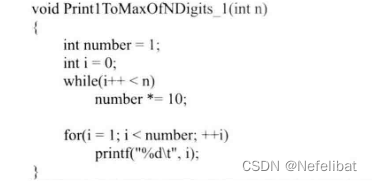
But when you type n Very big time , Will it overflow ?
Ideas
Solution of analog digital addition on string , Large numbers can be represented by strings . When a string represents a number , Every character in the string is 0-9 Between a certain character , Used to represent a digit in a number . Because the biggest number is n position , We need a length of n+1 String , The last bit in the string is the closing symbol \0, When the actual number is not enough n When a , Put... In the first half of the string 0. Increment A string representing a number number To add 1,PrintNumber Print out number,
When do we need to stop at number increase 1, After each increment , call strcmp() A string representing a number number And the biggest n digit “99...99”, Only in “99..99” Add 1 When , Will generate a carry based on the first character ,
Code
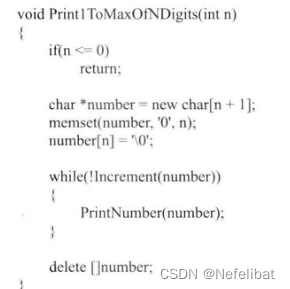
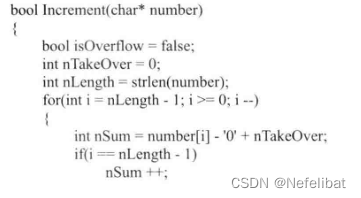
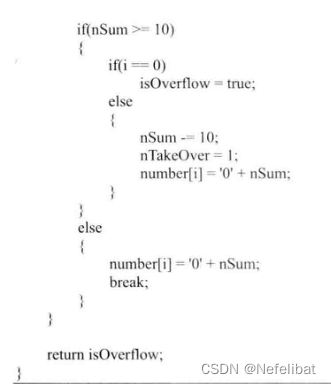

Turn the problem into a problem of numerical arrangement , Recursion makes code simpler
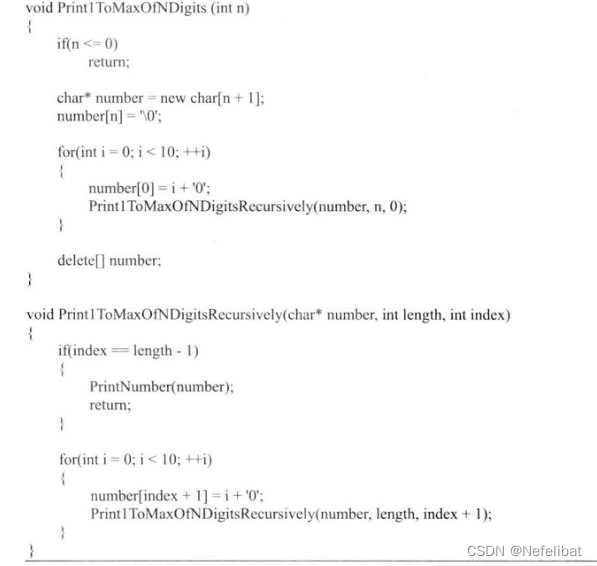
The test case
1、 A functional test , Input 1,2,3,..
2、 Special input test , Input -1,0
Expand
In the previous code . We use it char One character of represents one digit in decimal number ,8bit The characters of can be listed at most 256 Characters ,2 Of 8 Power , But decimal numbers 0-9 It can only mean 10 A digital , because char Characters can make full use of memory , So is there a more efficient way to represent large numbers ?
subject : Delete the node of the linked list
stay o(1) Delete node in time , Follow the header pointer and node pointer of a single linked list .
Ideas
Traverse the linked list to find the node to be deleted , And delete nodes from the linked list .
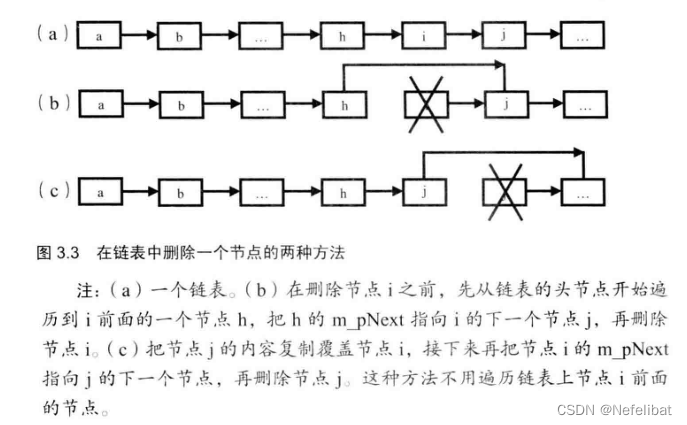
Existing problems :
If the node to be deleted is at the end of the linked list , Traverse the linked list to get the pre order node of this node , Then there is no next node , If there is only A node , Then set the head node of the linked list to nullptr.
Code

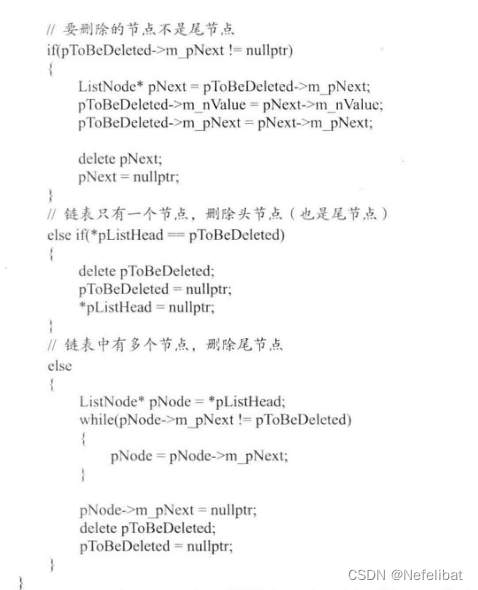
Use cases
Delete header node , Delete tail node , Delete the linked list with only one node
subject : Delete duplicate nodes in the list
In a sorted list , How to delete duplicate nodes
Ideas
Traverse the linked list from scratch , If the current node has the same value as the next node , Just delete
Code ( Follow up needs to see )
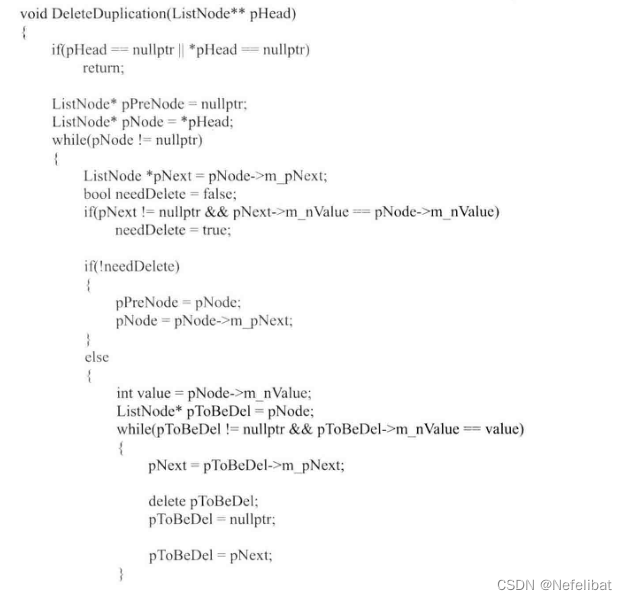
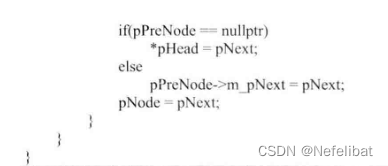
Use cases
Duplicate nodes are located at the head of the linked list 、 The tail , middle , There are no duplicate nodes in the linked list , Pointing to the chain header node is nullptr The pointer , All nodes in the linked list are duplicated .
subject : Regular Expression Matching
Set a function to match the containing “.” and “*” Regular expression of , In the pattern “.” Can represent any character ,“*” Indicates that the character in front of it can appear any number of times , for example ,“aaa” And “a.a” and “ab*ac*a” matching .
Ideas
When the second character in the pattern is not “*” when , If the first character in the string matches the first character in the pattern , Then both the character and the pattern move backward by one character , Then match the remaining strings and patterns , If the first character in the string does not match the first character in the pattern , return false.
When the second character in the pattern is “*” when , Move two characters backward on the pattern , amount to “*” And the characters before it are ignored ,

Code
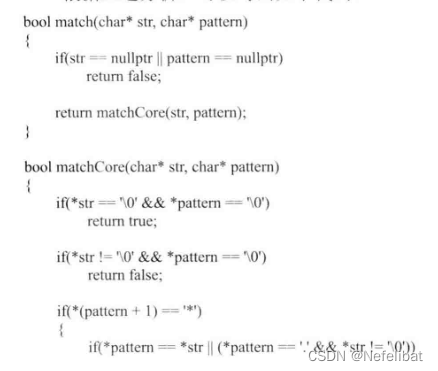
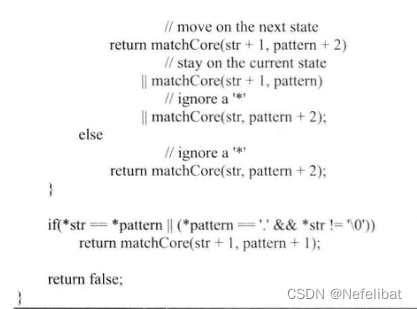
Use cases
String and pattern string are nullptr Or an empty string , The schema string summary contains “.” and “*”, The pattern string matches or does not match the input string
subject : String representing the value
The implementation uses a function to judge whether the string represents a value
for example “12e“,"1a3.14" Not numerical
Ideas
use A,B, C The three parts respectively code the integer of the value 、 Decimal and exponential parts , First, scan the integer part of the value , If you encounter “.”, Scan the decimal part of the value , If you encounter e perhaps E, Scan the exponential part of the value .
Code
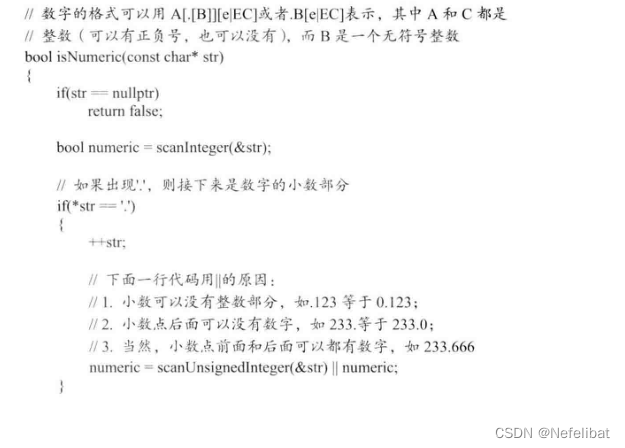
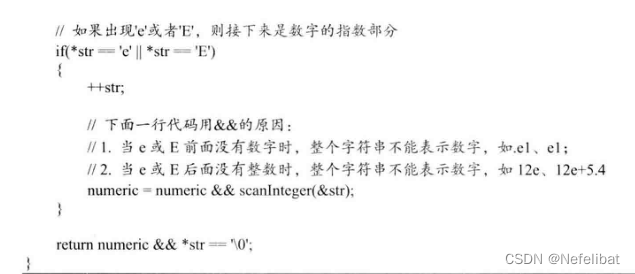
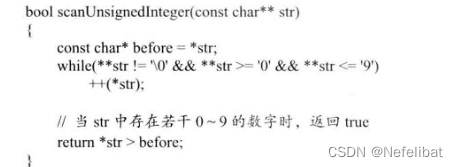

Use cases
Positive numbers 、 negative 、 Contains values that do not contain integer parts , Include values that do not contain decimal parts , Include values that do not include exponential parts ; The input string or mode string is nullptr, An empty string .
subject : Adjust the array order so that the odd Numbers precede the even Numbers
Ideas
If you don't think about time , Scan this number from the beginning , Every time you encounter an even number , Take out this number , Move the number after this number forward by one digit , There is a space at the end of the number , Put the even number into this space , The time complexity of moving once is o(n), So the time complexity is o(n2)
Improve your thinking
When scanning the array, even numbers appear in front of odd numbers , Exchange two numbers , Point to the first number of the array with a pointer , move backward , A pointer points to the last number of the array , Move forward , If the previous pointer points to an even number , And the second pointer points to an odd number , Exchange two numbers .
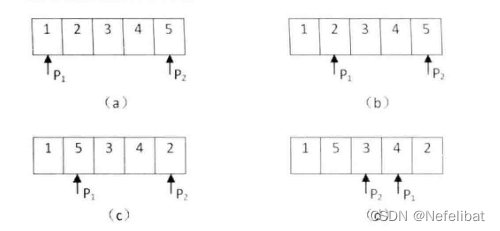
Code
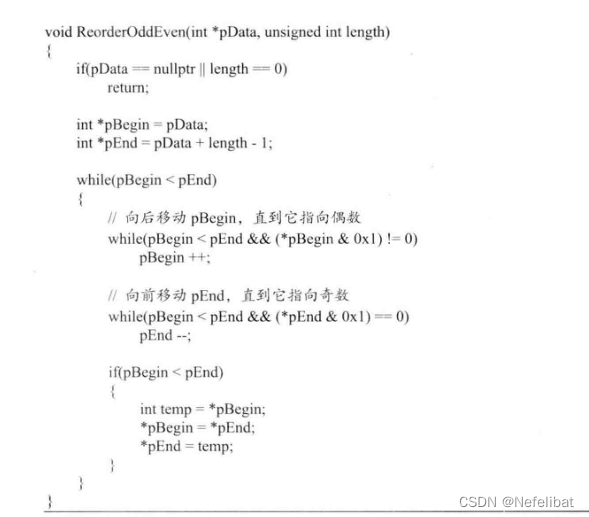
Extended topics : Put negative numbers in an array in front of non negative numbers
Extended topics : An array can be 3 Divisible numbers are placed where they cannot be 3 Before the number of divisions
To solve this kind of problem , Just modify the judgment conditions , Therefore, this logical framework can be abstracted , Use a separate function to judge whether the number meets the standard .
Code
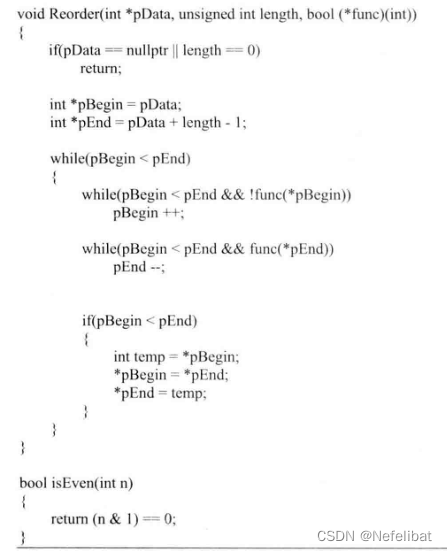
Use cases
Even and odd numbers in the array alternate , All input arrays appear before odd numbers , All the odd numbers entered appear before the even numbers , Input nullptr The pointer , The array contains only one number
subject : The penultimate in a linked list K Nodes
Ideas
1、 First traverse to the end of the linked list , Then go back k Step , But the one-way linked list has no forward pointer
2、 Traverse the linked list from scratch , The list has n Nodes , So the last one K Nodes, even from the beginning n-K+1 Nodes
3、 The second method needs to traverse the linked list 2 Time , If the interviewer asks to traverse the linked list 1 Time , Then the second method is not feasible , You need two pointers , The first pointer traverses from the beginning k-1 When a node , The second pointer starts from the head node of the linked list , So the distance between the two pointers is k-1, When the first pointer reaches the tail , The second pointer points to the... Of the linked list K Nodes .
Code
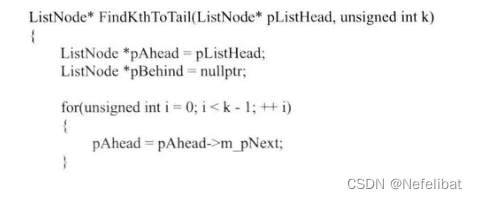
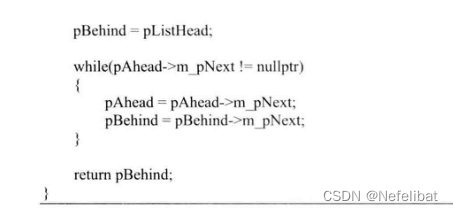
The problem is
If the input header node points to a null pointer , The number of nodes of the input linked list is less than k, Input k yes 0, Deal with these three problems separately .
Improve the code
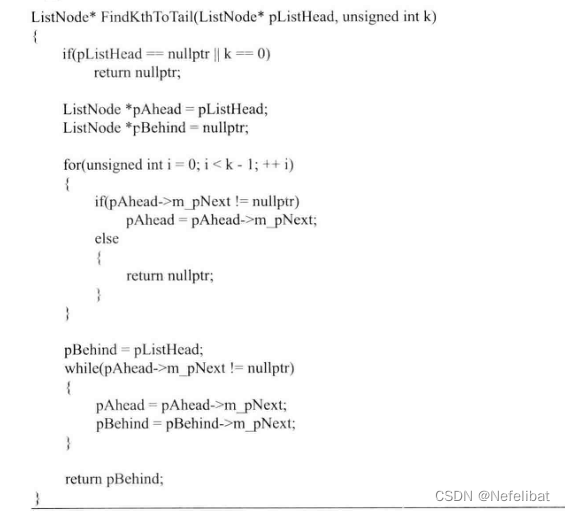
Use cases
The first k The first node is the head node of the linked list , Tail node ; The head node of the linked list is nullptr, The total number of nodes in the linked list is less than k,k be equal to 0.
subject : The entry node of the ring in the linked list
Ideas
The first step is to determine whether the linked list contains rings , Define two pointers , At the same time, start from the head node of the linked list , One step at a time , The other pointer takes two steps at a time , If two hands meet , Then the linked list has rings , If a pointer reaches the end of the linked list , Then there is no ring .
The second step is to find the entrance of the ring , Suppose a linked list contains n Nodes , A pointer goes first n Step , Then another pointer starts from the beginning , A pointer starts from the tail , The node where two pointers meet is the entry node . Then count from this node , Return to this node again, and the count ends .

Code
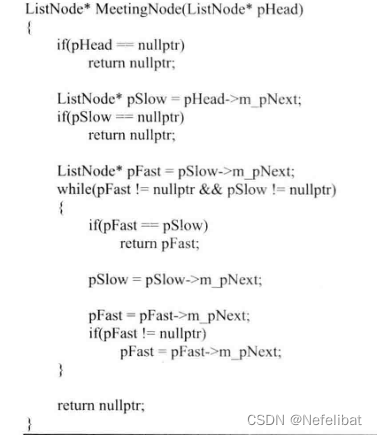
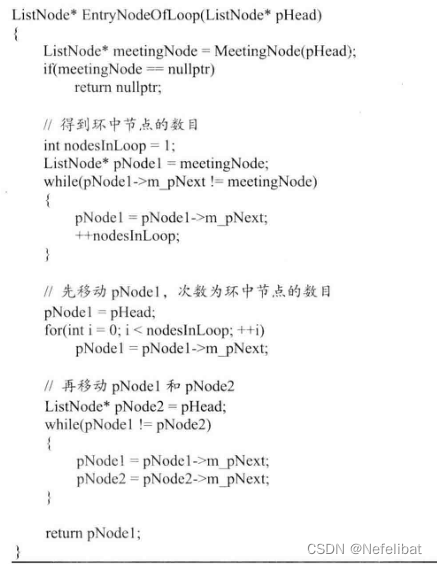
Use cases
The linked list contains or does not contain rings , There are multiple or only one node in the linked list , The chain header node is nullptr The pointer
subject : Reverse a linked list
Ideas
At our adjustment node i When , Need to know node i Previous node of h, We will i Of next Pointer to h
Code
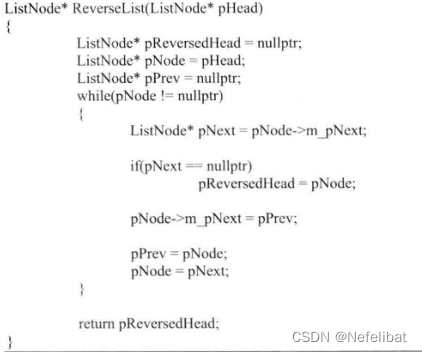
Use cases
There are multiple nodes in the list , There is a node in the list , The chain header node is nullptr The pointer
subject : Merge two ordered linked lists
Enter two ascending ordered linked lists , Merge these two linked lists and make the nodes in the new linked list still be sorted incrementally .

Ideas
1、 Linked list 1 The head node of is smaller than the linked list 2 The value of the head node of , So linked list 1 The head node of is the head node of the merged linked list .
2、 In the remaining nodes , Linked list 2 The head node of is smaller than the linked list 1 Head node of , So linked list 2 The head node of is the head node of the remaining nodes
Because the merging steps are the same , So this can be seen as a recursive process .
Code
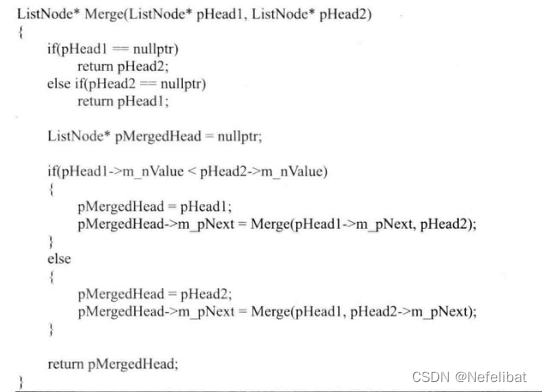
Use cases
The two linked lists to be merged have multiple nodes ; The values of nodes are different from each other or there are multiple nodes with equal values ; Two linked list summaries have only one node ; The head pointers of the two linked lists are nullptr.
subject : The substructure of a tree ( Compared with the linked list , The pointer of the tree is more difficult )
Input two binary trees A and B, Judge B Is it right? A Substructure of .

Ideas
First step , stay A Found in and B The same node as the root node of R, The second step , Judge A China and Israel R Whether the subtree of the root node contains and B Same structure .
Code
The first step is to traverse the tree , Tree traversal can be recursive , It can cycle , Recursive method is simpler .
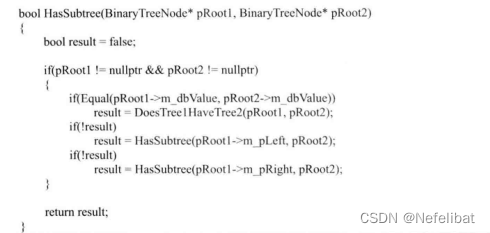
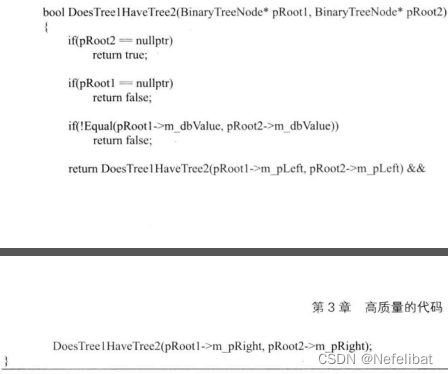

Use cases
A and B It's an ordinary binary tree ,B No A Substructure of ,A and B One or two root nodes of are nullptr The pointer ,A or B There is no left index or right index .
Be careful
1、 Every time you use a pointer , We all have to ask ourselves whether this pointer can be nullptr, If it is nullptr What to do with .
2、 Because the computer says there is error in decimal , We cannot use symbols directly == Judge whether two decimals are equal , If the absolute value of the difference between two decimals is very small , It can be considered equal .
边栏推荐
- 服装门店如何盈利?
- from .onnxruntime_pybind11_state import * # noqa ddddocr运行报错
- Answer to the first stage of the assignment of "information security management and evaluation" of the higher vocational group of the 2018 Jiangsu Vocational College skills competition
- MySQL installation
- 肿瘤免疫治疗研究丨ProSci LAG3抗体解决方案
- Pinduoduo lost the lawsuit: "bargain for free" infringed the right to know but did not constitute fraud, and was sentenced to pay 400 yuan
- 健身房如何提高竞争力?
- 化工园区危化品企业安全风险智能化管控平台建设四大目标
- 大咖云集|NextArch基金会云开发Meetup来啦
- JDBC database connection pool usage problem
猜你喜欢
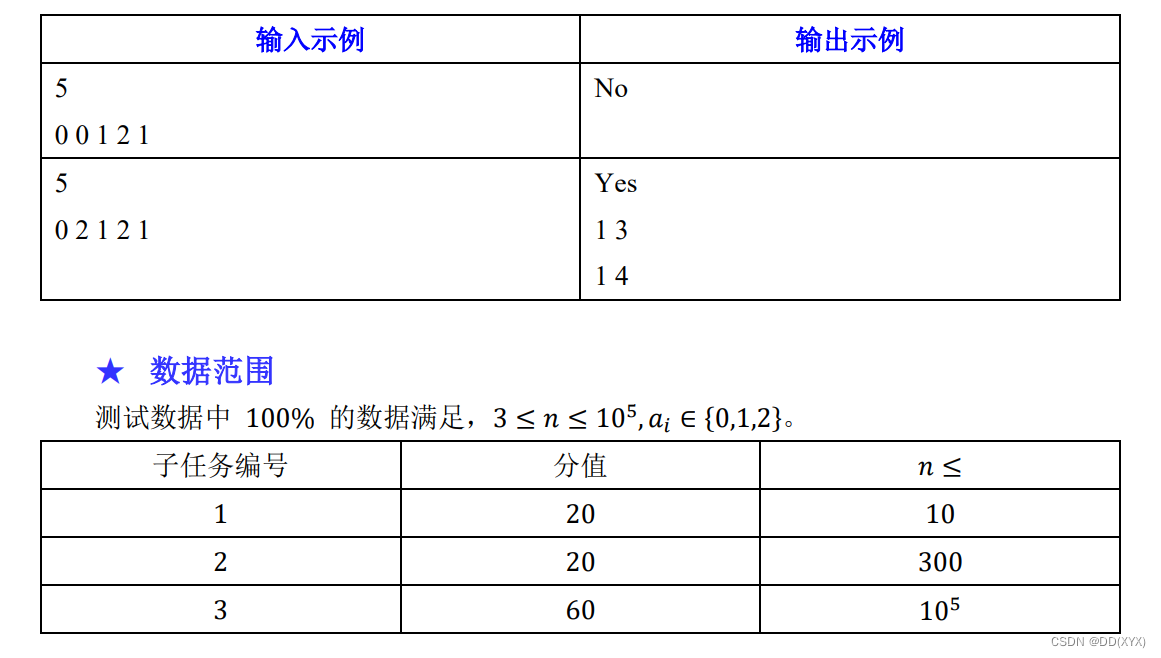
【NOI模拟赛】区域划分(结论,构造)

dolphinscheduler3. X local startup

How to share the same storage among multiple kubernetes clusters

Stack and queue-p79-9
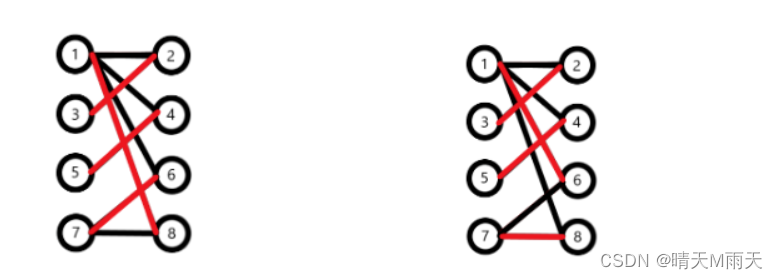
Prime partner of Huawei machine test questions

Brand · consultation standardization
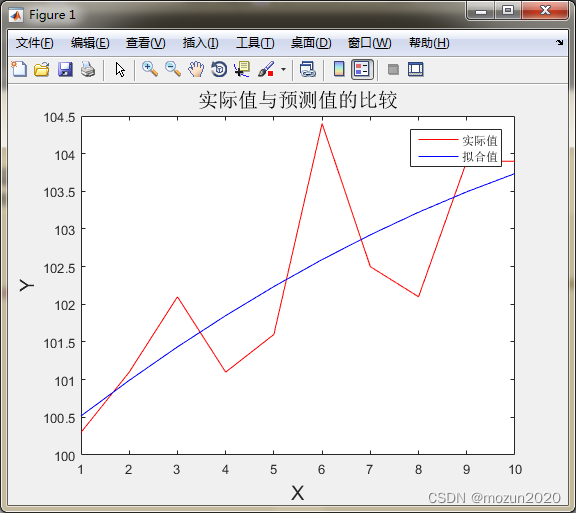
Matlab tips (29) polynomial fitting plotfit

.net core 访问不常见的静态文件类型(MIME 类型)
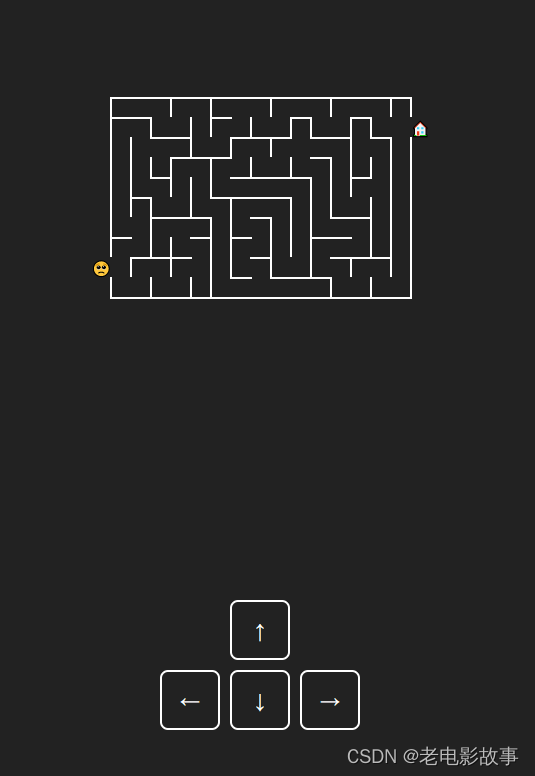
基于JS的迷宫小游戏
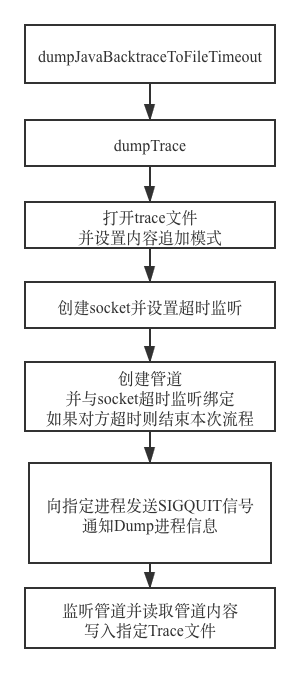
ANR 原理及实践
随机推荐
SolidWorks的GB库(钢型材库,包括铝型材、铝管等结构)安装及使用教程(生成铝型材为例)
ViewModelProvider.of 过时方法解决
2018年江苏省职业院校技能大赛高职组“信息安全管理与评估”赛项任务书
2022/07/04学习记录
How can flinksql calculate the difference between a field before and after update when docking with CDC?
Sqlserver multithreaded query problem
当前发布的SKU(销售规格)信息中包含疑似与宝贝无关的字
Can't you really do it when you are 35 years old?
Abnova 免疫组化服务解决方案
企業如何進行數據治理?分享數據治理4個方面的經驗總結
Bus message bus
数据资产管理与数据安全国内外最新趋势
中英文说明书丨ProSci LAG-3 重组蛋白
JDBC database connection pool usage problem
Kotlin之 Databinding 异常
Installing redis and windows extension method under win system
网络基础 —— 报头、封装和解包
服装门店如何盈利?
【mysqld】Can't create/write to file
Maze games based on JS